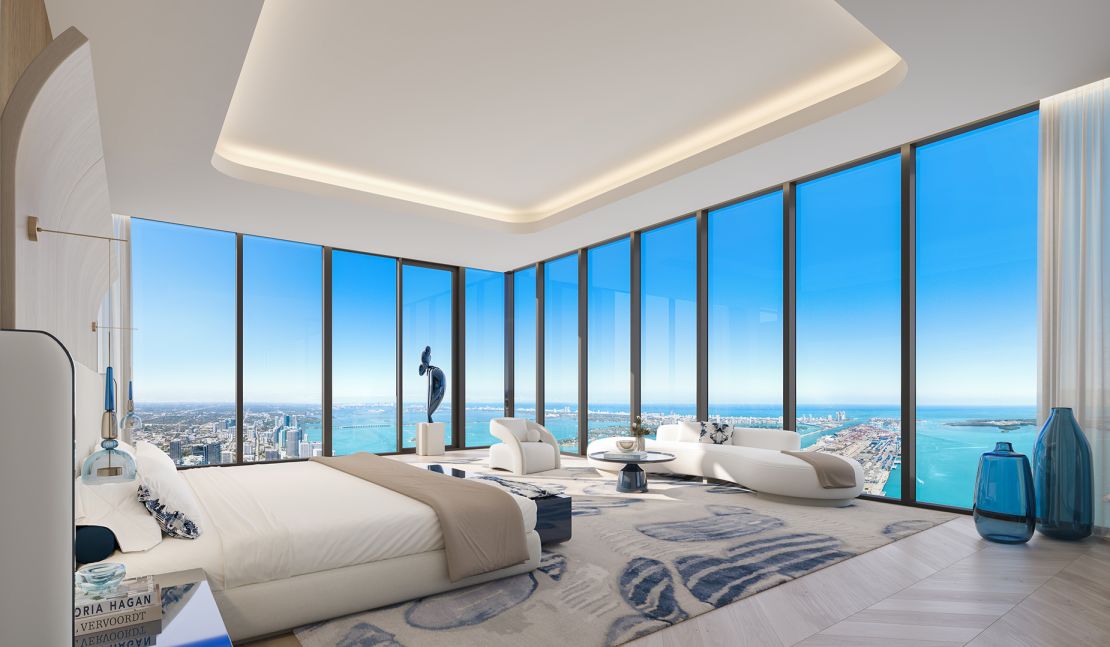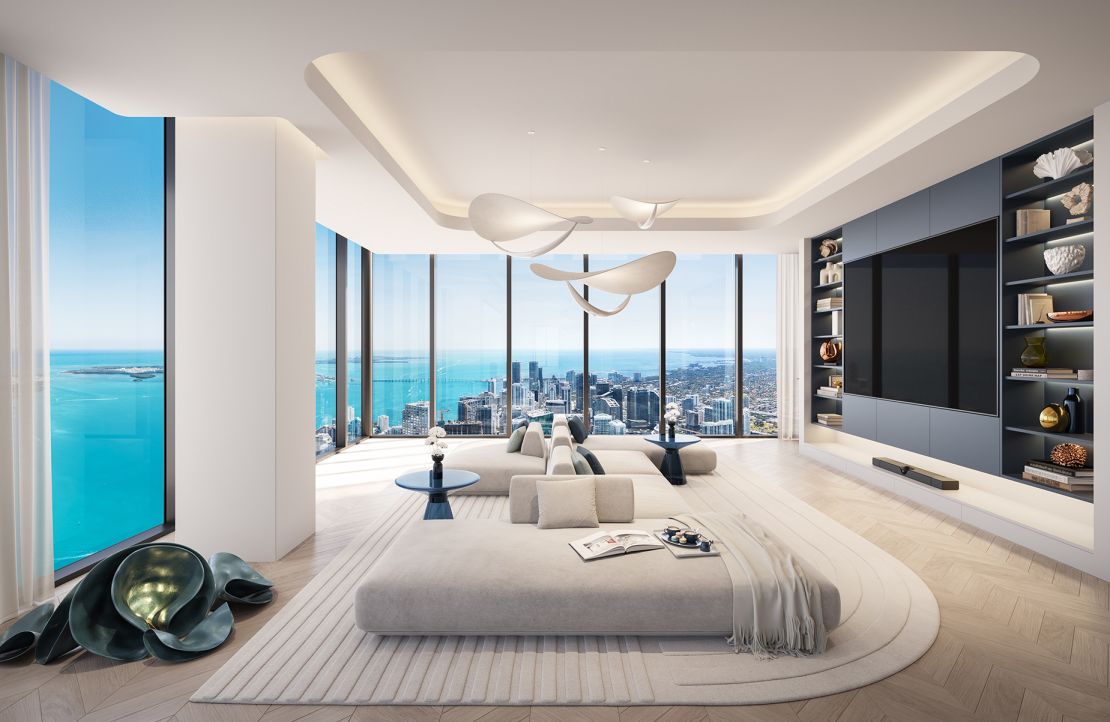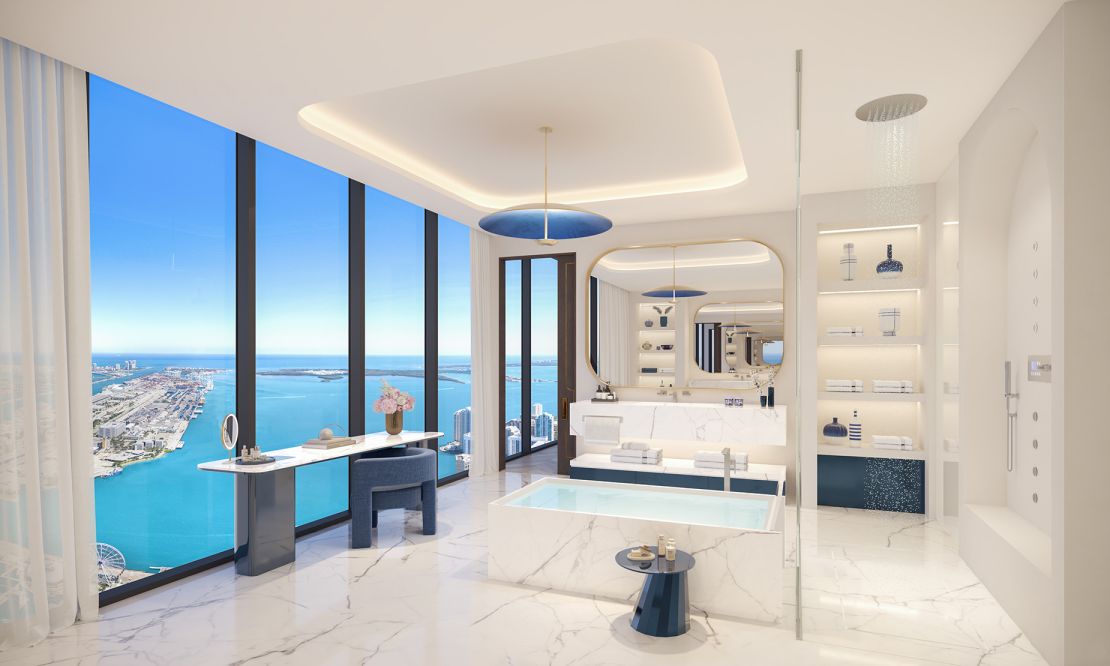The developers behind Miami’s glittering Waldorf Astoria supertall have unveiled the first look at the 1,049-foot tower’s $50 million penthouse, one of the most expensive units to come to market in the city.
The six-bedroom, nine-bathroom property — which spans some 13,000 square feet — will sit at the top of the nine stacked cubes that make up the vertiginous building, situated on a waterfront stretch in downtown Miami. It’s currently slated to be completed in 2027 by architect Carlos Ott and the firm Sieger Suarez.
Renderings of the penthouse’s interior — designed by the firm BAMO — showcase a modern, airy unit with wraparound windows, enclosed balconies, recessed lighting and luxe marble finishes. Rooms include a private gym, spa, library and theater.


And, when it’s completed, the penthouse will stand out in Miami’s (currently) unobstructed sky. Though a number of skyscrapers are being built or have been proposed in the South Florida metropolis, the Waldorf Astoria Miami hopes to top out first.
“Even with the great skyscrapers of the world — in Dubai, Hong Kong, New York — there’s a lot of towers,” said Ryan Shear, managing partner of the building’s developer, PMG. With the Waldorf Astoria Miami, he continued, “you get to be on top of a world-class city.”
With that in mind, the team at BAMO worked with the theme of “transcendence” as they envisioned the building’s interiors, explained principal designer Anne Wilkinson, which include the shared amenities of the building’s 460 residences and 205 hotel rooms and suites.
The Waldorf Astoria brand is known for its mainstays: a grand clock in every location, for example, as well as Peacock Alley, a lounge in the historic New York hotel that has since been replicated in its other properties. In Miami, these spaces are meant to evoke a sense of wonder, with Peacock Alley becoming a “conservatory” in the sky, she said, with sweeping views from three sides on the 19th and 20th floors.
On those floors, the building’s version of a signature clock is a three-story pendulum that Wilkinson says no other Waldorf Astoria location “has ever attempted.” From at the building’s restaurant on the 21st floor, the pendulum swings down to Peacock Alley, nearly sweeping its 19th floor at just 3 feet off the ground.


In the penthouse, Wilkinson said their team took inspiration from the exterior’s geometric architecture in the palette of surfaces and finishings.
“(Carlos Ott) described the skin of the building as this reflective surface… you can imagine every facet of those cubes reflecting a different part of the sky,” she said. “I thought that was such a beautiful notion, so we pulled it into the interior. A lot of our colors are these ethereal grays and blues, and even shifting into nighttime inky colors.”
Though the original Waldorf Astoria on New York’s Fifth Avenue is best-known for its ornamental Art Deco architecture, Wilkinson believes the clean lines of the Miami iteration and its sky-high penthouse fit well within its legacy.
“If you remember back when Waldorf was originally built, Art Deco was quite avant garde,” she said. “And so to me, I think Waldorf is more about being forward-looking. It’s about the design of the moment.”




